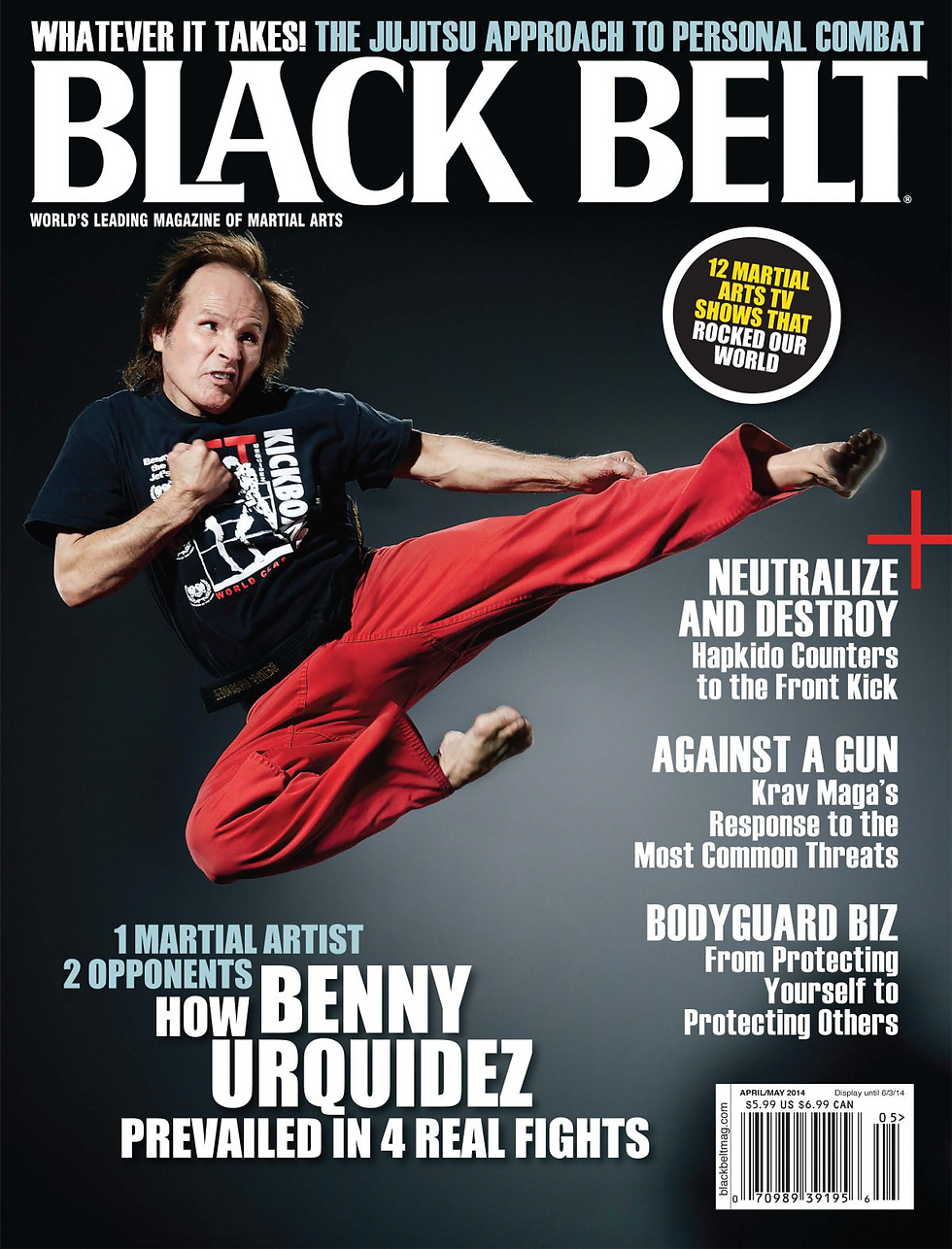- George Kirby
- May 9, 2024
- 6 min read

Jack Seki, the traditional sensei who taught me Japanese jujitsu, never gave his students a separate term for each block they learned. For Seki, blocking was an integral part of any jujitsu technique that involved stopping or deflecting an attack before countering. Rather than it being a distinct movement, the block was just a step you took so you could protect yourself long enough to get to the attacker and deal with him.
There were only two terms Seki used: te no tatake for blocking a hand technique and juji for blocking an overhead strike or a kick. That was it. Some jujitsu ryu and most karate ryu typically have 10 or 12 distinct names for blocks delivered at specific angles or elevations, and teachers devote lots of class time to conveying the proper terminology and the associated execution. But for Seki, all that was irrelevant.
A block was just a motion you made as you moved in to continue your defense. It either worked or you got hit. Here are some Budoshin Jujitsu Blocking Techniques. Done!
Guidelines
According to Seki, a block executed while doing a complete jujitsu technique has one of two purposes. First, it can deflect the attack so the incoming weapon travels 2 to 4 inches to the side of its target, which is usually your head or torso. Second, it can stop the forward motion of the attack completely, which is sometimes called a hard block.

Most overhead blows, kicks, and roundhouse or backhand strikes require a hard block because of their greater momentum and potentially greater impact. Most martial artists effect their hard blocks at 90 degrees to the attack’s trajectory because that’s the angle at which they’re most effective. Here are some common examples of this hard methodology:
• You block an overhead strike with a club by making contact with a part of the limb that’s between the mid forearm and the elbow. You block a kick by making contact just above the kneecap before the opponent’s lower leg extends beyond 90 degrees.
• You block a roundhouse swing by connecting with the forearm close to the wrist.
• You block a hook by intercepting the upper arm before the elbow extends forward of an imaginary line that would go through both shoulders.
• You block a backfist by using both forearms to hit the adversary’s arm between the elbow and the fist, or by using one forearm to make contact above the elbow and one to make contact between the elbow and the fist.
Why is the point of impact important when using a hard block?
Because a proper block can cause the closest parent joint to transfer the energy of the block to the attacker’s torso, thus off-balancing him. In the case of a roundhouse, backhand or overhead strike, a properly executed hard block can make the attacker’s hand lose strength and/or open, and that can cause the person to drop his weapon if he has one.

Mechanics
A hard block is a technique that impacts the attacking arm or leg at a 90-degree angle. Although all juji are initially hard blocks, a hard block also can be delivered with just one forearm against a punch.
Also, a juji can deflect an attack slightly to either side after impact. Note that with a hard block, you typically “stand your ground” (refrain from moving your feet) or take a slight step toward your attacker with your lead foot so your body can better absorb the impact of the blow. In either case, it’s your strong base that enables you to execute a successful block.
Most hand strikes and attempted grabs can be effectively dealt with using a deflection block. You’re not trying to stop the forward momentum of the attack, just change its path by 2 to 4 inches to either side. Deflection blocks are also different from hard blocks in that the target (you) usually moves slightly in the opposite direction of the block. This body movement, either a circular pivot or a side step, sets you up for your response. Deflection blocks give you the option of moving into the attacker (to execute a technique) or away from him (to create space) more quickly compared to hard blocks.

Tactics
Why would you choose a deflection block that gives you the option to move away from your attacker? Because on the street, you may want to give common sense a chance to prevail before tensions escalate even more. At that moment, if you can successfully deflect his intended attack and step back, one of two things will happen.
First (and ideally), he might recognize that his attack didn’t work, that you’re ready if he attacks again and that you actually might hurt him if he proceeds — although he doesn’t know how you’ll do it. Putting doubt in your attacker’s mind can be a powerful weapon.
Second, you might opt to step back to force your opponent to move forward to continue his assault, which will make him look even more like the aggressor in the eyes of witnesses. The fact that he has to step forward to attack you also gives you a better opportunity to judge his direction and use his energy or momentum to your advantage.
Furthermore along those lines of thinking, when you deflect his attack and step back, it gives you the opportunity to verbalize that you don’t want to fight. This can be an important factor in your defense should you end up in court as a result of a physical confrontation.
Witnesses will be able to verify your physical actions and your verbalizations, all of which were intended to defuse the situation.

Definitions
So far, I’ve focused on blocking guidelines, mechanics and tactics. However, I never really defined the terms “te no tatake” and “juji.” There are some important differences that will determine how you implement these moves.
In my book Jujitsu: Toward One Technique, I defined a te no tatake as a “blocking hit” and a juji as a “cross-block, done with both hands clenched into fists and the arms crossed for a more effective and stronger block.”
To elaborate, a te-no-tatake can be a hard block (effected at 90 degrees) or a softer deflection block delivered with one forearm — at the discretion of the defender depending on the situation and/ or his automatic response. However, both forearms are used occasionally, such as when your inner arm is used for a counterattack (common in krav maga). A te no tatake is not as strong as a juji because it doesn’t need to be. All it’s supposed to do is slightly alter the direction of the attack.
To be more effective, a te no tatake is commonly done with an open hand rather than a closed fist. It’s a given that a closed fist gives you a stronger and harder block. However, an open hand allows you to more quickly hook your hand over your attacker’s forearm (called “sticky hands,” this is an essential element of wing chun kung fu) and maintain your hold on his arm as he retracts it or continues his forward motion.
This enables you to more effectively use his energy to set up and execute your defense. If you maintain the hook, it also makes it difficult for him to continue to use his arm offensively, thus creating a serious distraction for him.
A juji is always a crossed-forearm block that uses both arms. The right arm is over the left if it’s a right-handed attack, and the left is over the right if it’s a left-handed attack. Both of your arms and legs are bent slightly so they can serve as shock absorbers as you step in to meet the attack.
A juji always has another distinct characteristic: Both hands are closed to form tight fists. There are two reasons for this. First, having clenched fists allows you to deliver a stronger — and more painful — block. Second, because overhead strikes, roundhouse punches and kicks carry more force, having closed fists tends to protect your fingers from being broken should they get hit.
When it comes to blocking, two crossover variables exist and therefore warrant a brief discussion. A well-delivered juji can incorporate a slight amount of intentional deflection to help you off-balance your attacker. Conversely, a deflection block can be done with a closed fist if a juji isn’t possible or if doing so works more effectively as a prelude to your next technique. There are no absolutes in blocking or any other subsets of the martial arts; there is only good training.
Guarantees
Do blocks always work? No. Even after 53 years of teaching jujitsu, I occasionally don’t block as effectively as I should — and I usually suffer the consequences. However, as with any martial arts skill, the more you practice, the better you get. You learn that even when a block partially fails, in most cases, you can continue your defense
As I mentioned, there are no absolutes when it comes to blocking. The situation determines what you can do. This is why Jack Seki didn’t differentiate the blocks he taught beyond distinguishing the one-hand/one-arm te no tatake from the two-hand/two-arm juji. For him, they constituted an integral part of a complete jujitsu technique, and that’s all they were. To separate them into their own categories with specific names and characteristics was anathema to their purpose, which was and is to quickly open a pathway to counter an opponent’s attack.
For Seki, a block was a block. Either it worked or you got hit. Done!
George Kirby, 10th degree, is a Black Belt Hall of Famer and the founder of budoshin jujitsu. His most recent book is Jujitsu: Toward One Technique. For more information, visit shop.blackbeltmag.com.
This article originally appeared in a 2021 issue of Black Belt Magazine.





























































































